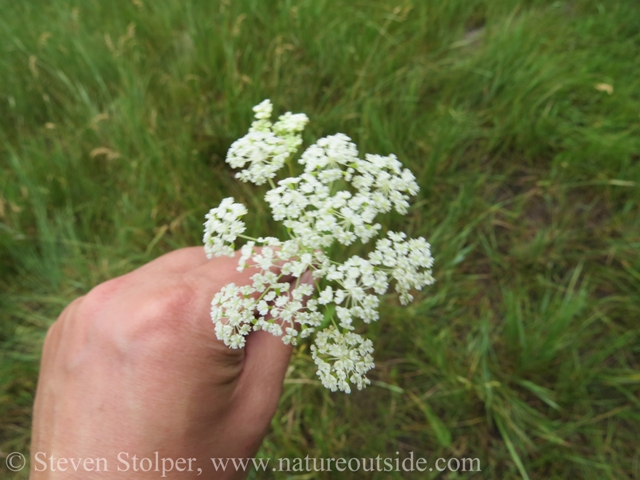
There is much written about using the aerial parts of plants. But with Yampah (Perideridia sp.), it is the root we are after!
I spent part of last summer at a Sierra Nevada Field Camp run by a local state university. During this time I was fortunate to take a class where we spent two days foraging for edibles and a day and a half processing and cooking. I thought it might be fun to take a look at one of the edible plants we used.
|
IMPORTANT:
|
Yampah is in the Apiaceae (Carrot) family and has umbels of white flowers. It grows in the western US and I find it at higher elevations in the Sierra Nevada. The plant can be as tall as three feet. But I usually see it at around two. The stems are nearly devoid of leaves. The leaves remind me of the foot of some large bird. They are pinnate and divided into three long, thin lobes joined close to the stem. In the Sierras, I have encountered two types: Parish’s Yampah (Perideridia parishii) and Bolander’s Yampah (Perideridia bolanderi). This species information comes from John Muir Laws’ amazing field guide.
Many of my Yampah pictures are slightly out of focus. It was a windy day and several of my shots are blurred as the plant swayed in my hand.

Yampah inflorescence. Notice umbels characteristic of Apiaceae
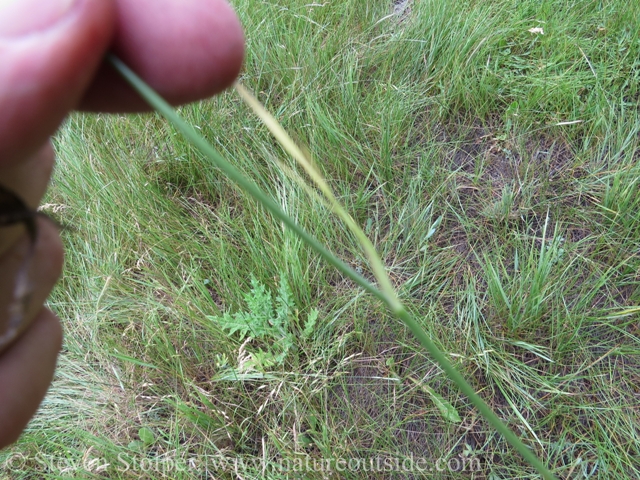
Yampah leaf reminds me of a seabird’s foot
|
CAUTION: The Apiaceae family has a number of plants that are used for food and medicine. But there are also members that are poisonous and can kill you. Others contain arsenides that you would not wish to consume in large amounts. I suspect that some of these toxins may even be the active ingredients in medicines made from the plants. Please make a positive ID of any Apiaceae you use for food or medicine. |
In my (limited) experience, Yampah at the higher altitudes grows in dryer areas than other members of its family. Habitat is one clue I use to avoid a dangerous misidentification. The plant seemed plentiful during my hikes. Although two sources I found mentioned there was a time when they were very rare due to over-harvesting by indigenous peoples.
Yampah makes me think about survival food strategies. The edible root is very small. The largest I found were the size of two peanut M&Ms stuck together. One student in the class opined, “This is a waste of time and energy” as we dug roots. But I think otherwise. You can expend a lot of energy for a big payoff (i.e. hunting or digging deep roots) or a small amount of energy for a small payoff that is plentiful. I would rather have the small, plentiful, food source that requires little energy to exploit. It seems like a more stable survival strategy. What do you think?
The root can be eaten raw or cooked. The raw root has that distinctive Apiacae-like taste. Think of a slightly bitter carrot. When cooked, the taste diminishes and a potato-like flavor emerges. I like both, but the cooked root tasted more like “energy”.
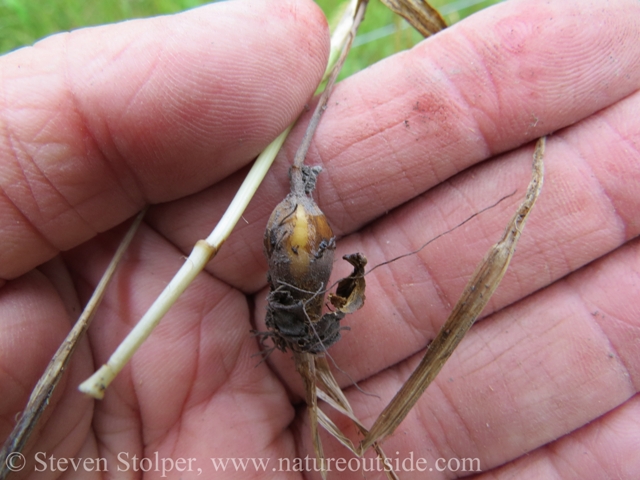
The root is very small, but contains valuable carbohydrate
We called our search for Yampah, “Yampah Romping”. The pictures below show my technique for unearthing the root. Whether using a digging stick or trowel, I dig around the base of the plant wider than the size of the expected root. When I feel I have gone deep enough, I lift the entire clod of earth. If this was a plant with a deeper root, I would instead clear the earth from away from the stem so I could keep digging. Many students started to dig right where the stem met the earth. Needless to say, they broke the stem and lost the root.
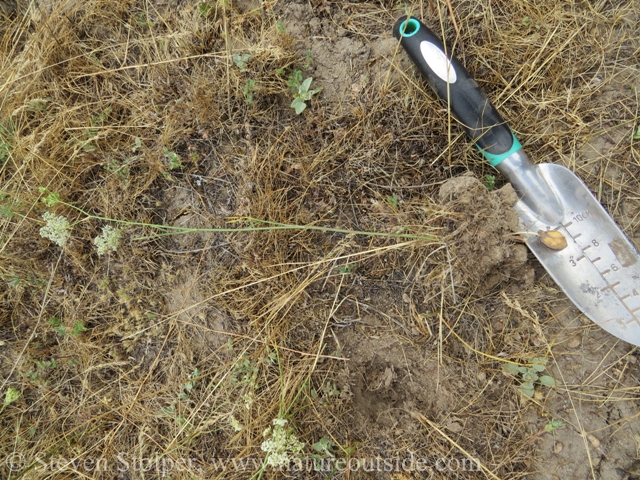
Entire plant with dirt clod. The root is not very deep.
In the excitement to unearth food, it is easy to rush the process. I was working on a plant that I was sure would yield a big root. But I rushed and broke the stem! When I finally uncovered the root, it was the largest I had yet found. But without the connected stem, I couldn’t be sure that it was the Yampah’s root. Hesitant to discard it, I brought the yummy item to my instructor for inspection. I asked him, “Is this Yampah?”
He looked thoughtfully at the root for a moment… and then popped it in his mouth!!! His verdict: “Yes, it is. And it’s delicious!” This demonstrates how severing the stem can cost you a tasty root. 🙄
Below are some pictures for size. There are three types of Yampah in the area we foraged. I encountered two of them. One had a root that was carrot shaped and the other shaped like a peanut. The examples below are the peanut type. Also note the clod of dirt above the root that results from my digging technique.
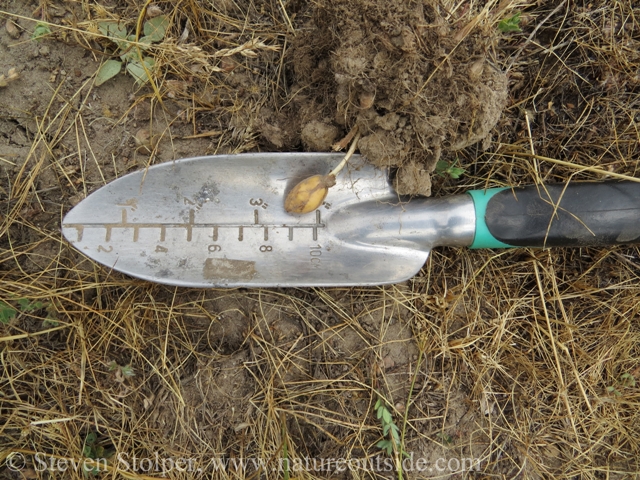
Yampah root
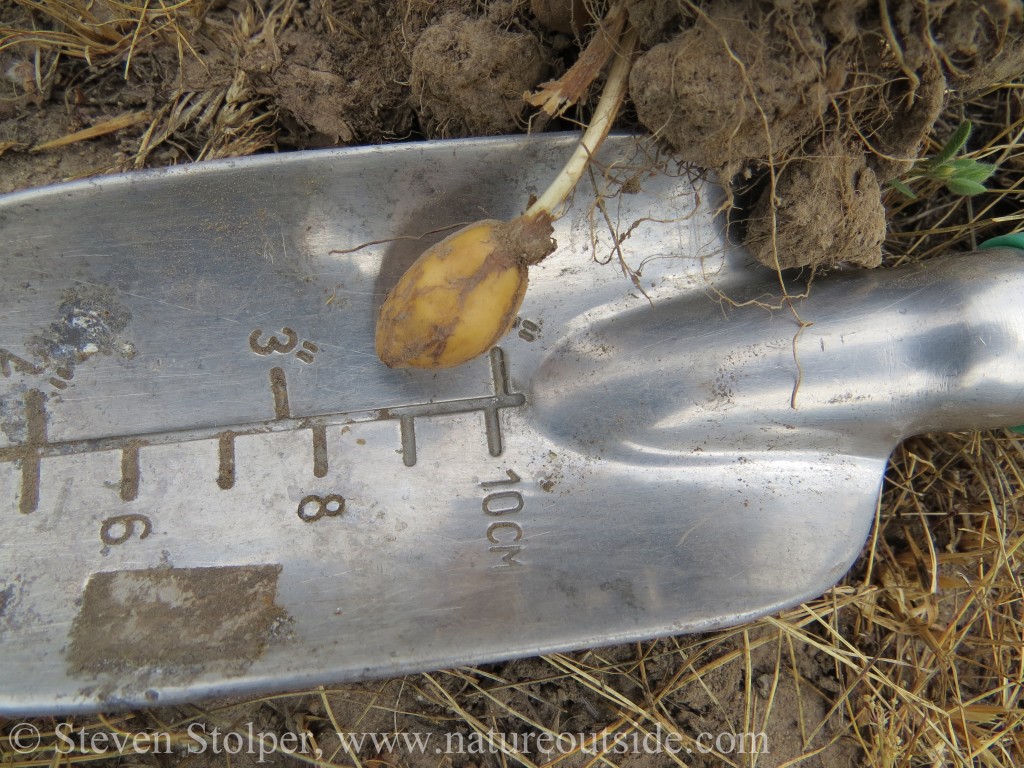
Yampah root
I clean Yampah root by rubbing it between my fingers. This removes the skin along with any clumped-on dirt.
We ended up making several dishes from the Yampah we collected. You can learn about them here (The Forager’s Feast).
Have you ever eaten Yampah?
Other Edibles on NatureOutside
Bushcraft Dessert – Make a Lavender Dip for Strawberries
If you enjoyed this article, you may like others in the Edibles Section.



Leave a Comment